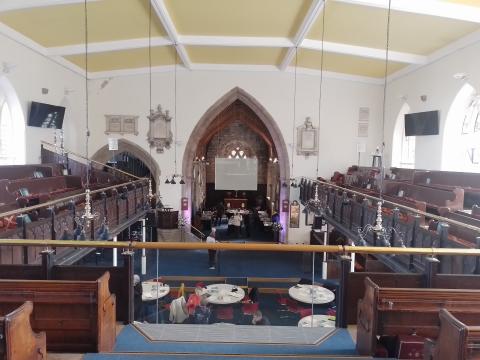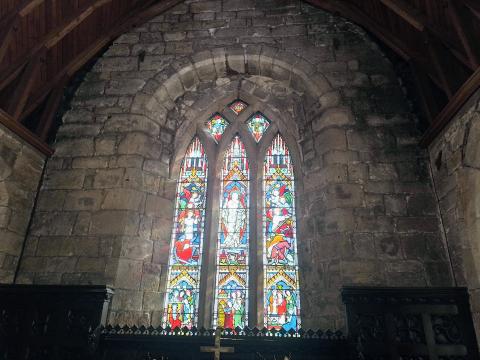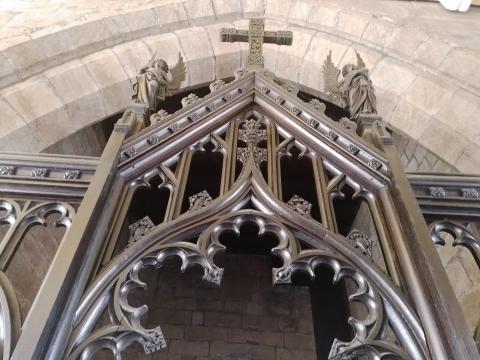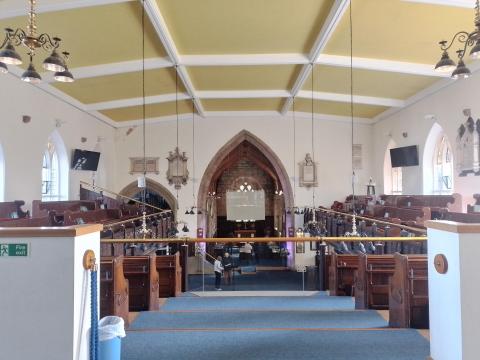St Andrew's Window, Leyland

I attended a half-day mini conference on Christian leadership this month, hosted by St Andrew’s Church, Leyland. I found the content most helpful, and ‘networked’ with some new people for which these kinds of events prove useful. Yet during the break, I could not resist the opportunity to investigate the architecture. St Andrew's appears to have a fifteenth-century tower at one end, an older chancel at the other end, with a nineteenth-century nave adjoining the two. This accounts for some of its ancient and interesting features, while enjoying a light and airy middle. It really has the best of both worlds.

The east window I found most curious. From afar, it is a pointed arch, with some basic, intersecting Y-tracery. I would usually reckon this to be Early English, i.e. from the 12th or early 13th century. Yet closer examination shows that this window is at least the second to have occupied that space. Above is the rounded arch of a former style, Romanesque. An echo of ancient Rome, it was much beloved by Saxons and Normans. Apparently, a hundred or so years after it was built, it was decided to fill it in and replace it with a slightly smaller and more slender window with a fashionable, pointed arch.

Although some might argue that the gothic style is more attractive than the plainer, rounded style, the change came at a cost. Less light was admitted from the new window than from the old. Suppose another generation, perhaps an Elizabethan, wished to see another style fitted to that east end, a rectangular window with leaded diamond-shaped panes. That could have further reduced the light. The point I make is this: the more we update our churches to embrace the latest styles, the less light comes in. The more we modernise our theology to fit the prevailing taste, the darker our churches become.
Church leaders beware.

- Log in to post comments


 Sunday Worship 10.45am & 6.00pm
Sunday Worship 10.45am & 6.00pm